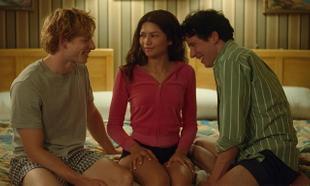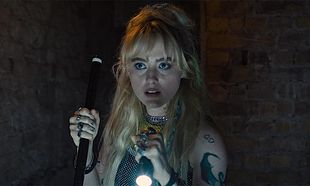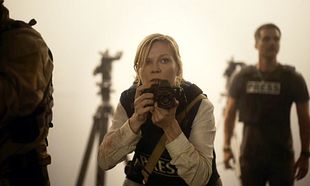With a film that defies a twenty-year ban on his work, Iranian ex-pat Mohammad Rasoulof delivers a damning diatribe on censorship in his country. It’s easy to get on board with the bravery of what the director has to say, and to be impressed that the film exists at all, but the snail’s pace is always in danger of upending the appreciation for its moral and narrative complexity.
Typical of Rasoulof, the narrative thrust driving Manuscripts Don’t Burn doesn’t reveal itself in any great hurry. Three stories intertwine: a man who’s hired muscle for the secret police is more worried about his son’s hospital bills than the political stance of those he’s hunting down; a poet is convinced by a wheelchair-bound writer to help him secretly publish his latest, and possibly last, book; while a secret police operative presents himself at the apartment of former cell mate-turned activist who is responsible for the titular work.
In a somewhat similar theme to Mohammad Rasoulof’s Goodbye – despair and the desire for escape – the writer director again returns to personal experience to craft an honest, thought-provoking story; Rasoulof himself fled Iran in 2010 and made this film under secretive conditions, which is why a cast list is absent. It’s an angry film fuelled by years of suppression and the audience is left in no doubt who the villain of the piece is but Rasoulof surprisingly uses restraint. It’s no rant, or at least it’s a muted one. The film has a lot to say but it does so with a whisper and its mature approach is refreshing.
It’s engaging to be wrapped up in the closed loop of the story structure (figuring out when and where we are in the run of things is part of the ‘fun’, for want of a better word), but it can be distracting from the film itself. If this is about oppression, censorship, depression and escape, then the non-linear narrative is befuddling somewhat. Within that there are some interesting choices that can surprise.
But the narrative style isn’t the only aspect that catches one off guard. Despite sympathising with the writers and the Tehran intelligentsia here, it’s the two characters on the government side that shine through. That villain of the piece – with his black trenchcoat and goatee – might look like the devil, but his tired calmness, the complete confidence that he will catch those responsible, is more akin to Richard Burton’s creepy O’Brien in 1984. The other bad guy, a struggling family man, just needs money for his son’s operation.
Slow but mesmerising.








































































